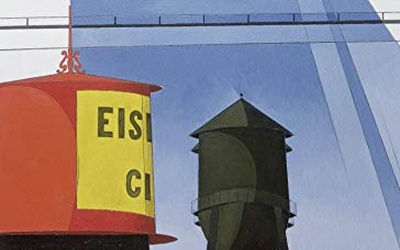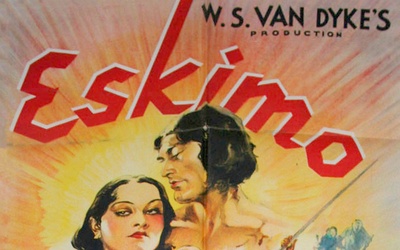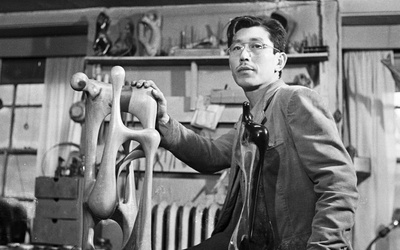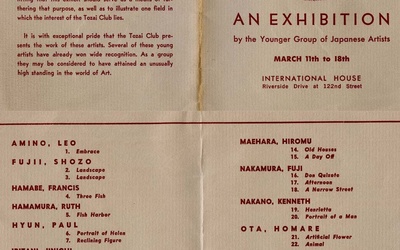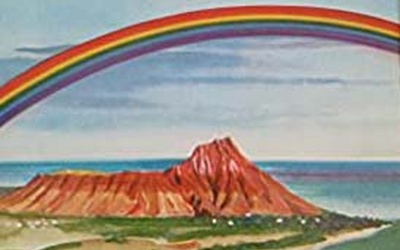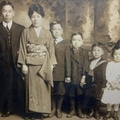
Greg Robinson
@GregGreg Robinson, a native New Yorker, is Professor of History at l'Université du Québec À Montréal, a French-language institution in Montreal, Canada. He is the author of the books By Order of the President: FDR and the Internment of Japanese Americans (Harvard University Press, 2001), A Tragedy of Democracy; Japanese Confinement in North America (Columbia University Press, 2009), After Camp: Portraits in Postwar Japanese Life and Politics (University of California Press, 2012), Pacific Citizens: Larry and Guyo Tajiri and Japanese American Journalism in the World War II Era (University of Illinois Press, 2012), and The Great Unknown: Japanese American Sketches (University Press of Colorado, 2016), as well as coeditor of the anthology Miné Okubo: Following Her Own Road (University of Washington Press, 2008). Robinson is also coeditor of the volume John Okada - The Life & Rediscovered Work of the Author of No-No Boy (University of Washington Press, 2018).
His historical column “The Great Unknown and the Unknown Great,” is a well-known feature of the Nichi Bei Weekly newspaper. Robinson’s latest book is an anthology of his Nichi Bei columns and stories published on Discover Nikkei, The Unsung Great: Portraits of Extraordinary Japanese Americans (University of Washington Press, 2020). It was recognized with an Association for Asian American Studies Book Award for Outstanding Achievement in History Honorable Mention in 2022. He can be reached at robinson.greg@uqam.ca.
Updated March 2022
Stories from This Author
Tani Jôji: Chronicles of a Japanese Vagabond in America - Part 2
May 2, 2022 • Greg Robinson
Read Part 1 >> Having reflected on the life and work of Hasegawa Kaitarō, I now wish to discuss the new French edition, translated by Gérald Peloux, of the Tani Jôji Chronicles. The volume starts with a prologue, a kind of poem whose verses evoke, in impressionistic images, the different places the author visited overseas, such as Shanghai; Australia; Chicago; Elizabethtown, Kentucky; Dalian and Sujiatun, Manchuria; Montreal; Valparaiso, Chile; and finally New York. For example, among the author’s impressions of …
Tani Jôji: Chronicles of a Japanese Vagabond in America - Part 1
May 1, 2022 • Greg Robinson
Whenever I visit Paris, I love to spend time going through bookstores, looking for interesting French books for my library. On my last trip, I went to the Librarie Le Phénix, my favorite bookstore for works on Asia and Asian Americans. While browsing the shelves, I came across a paperback with the delightful title Chroniques d’un trimardeur japonais en Amérique. [Chronicles of a Japanese Vagabond in America]. The author was listed as Tani Jôji. I had never heard of either …
Otto and Iris Yamaoka: Asian Actors in 1930s Hollywood - Part 2
April 18, 2022 • Greg Robinson
Read Part 1 >> Iris Yamaoka actually started her film career before her older brother Otto. She was a less prolific performer than her elder brother, perhaps because as a Nisei woman she faced gender as well as racial stereotyping. Still, her film career was most interesting in its own right. Iris Yamaoka was born in Seattle in 1910—she was the second youngest and only daughter of the six Yamaoka siblings. She was still in her teens when she moved …
Otto and Iris Yamaoka: Asian Actors in 1930s Hollywood - Part 1
April 17, 2022 • Greg Robinson
As readers of this column know, I have done a great deal of research in recent years on the panoply of Asian American performers who worked in Hollywood in the generation before World War II. Theirs was not a simple life. Hollywood studios made frequent use of white actors in yellowface to portray Asians (many of these portrayals now seem cringeworthy to a current-day audience). Even such roles as ethnic Asian performers were given to play, whether servants, menial laborers, …
Leo Amino: Building a Brighter Art Through Plastics - Part 2
March 25, 2022 • Greg Robinson
Read Part 1 >> In 1946, on the initiative of the famed artist Josef Albers, Leo Amino was invited to teach a summer institute at Black Mountain College, the progressive arts school in North Carolina. There he mixed with such luminaries as Jacob Lawrence and Walter Gropius. He would teach another summer session there in 1950. In 1952, Amino joined the faculty at Cooper Union in New York City, where he taught sculpture for some 25 years. In the course …
Leo Amino: Building a Brighter Art Through Plastics - Part 1
March 24, 2022 • Greg Robinson
The modern sculptor Leo Amino, who achieved fame in the postwar artworld but then faded from view, has been experiencing a rebirth of public interest in recent years. Amid the new attention that Amino’s work is receiving, it is interesting to retrace the path that took him to his initial renown. He was born Ichiro Amino on June 26 1911. His birthplace was Taiwan (then part of Japan), where his father was on agricultural assignment for the Japanese government. Amino …
Les nouvelles japonaises: French Canadian newspaper coverage of Japanese American wartime confinement - Part 2
March 9, 2022 • Greg Robinson
Read Part 1 >> Japanese American removal and confinement was a subject of great interest to the French Canadian press, at least in comparison to the roundup of West Coast Japanese Canadians. It is not clear how much of this disparity was due to the reliance of Quebec newspapers on information from American news services, and how much was conscious downplaying of events in British Columbia. Whatever the case, the French Canadian press featured multiple short articles on the forced …
Les nouvelles japonaises: French Canadian newspaper coverage of Japanese American wartime confinement - Part 1
March 8, 2022 • Greg Robinson
Jonathan van Harmelen has been studying international newspaper coverage of Japanese American confinement and of redress movements. After publishing a Discover Nikkei column on Dutch newspaper coverage, he followed it up with an extended study in the Journal of Transnational American Studies of British, French, German and Dutch sources. More recently, he has done some intriguing research on English-language Canadian newspapers and their coverage of events down south (yes, even as Americans use that historically-loaded phrase “South of the Border” to …
African American images on a Nikkei Canvas: Black Characters in Japanese American Literature - Part 4
Feb. 13, 2022 • Greg Robinson , Brian Niiya
Read Part 3 >> For the next twenty years, there was little in the way of Japanese American literature that included any mention of African Americans, even as more Japanese American writers began to be published. One notable exception comes in a trilogy of plays by Velina Hasu Houston that follow the lives of Creed and Setsuko Banks. Asa Ga Kimashita (Morning Has Broken) (1981), the first play in the series, is set in Ehime, Japan in 1945–46. It follows …
African American images on a Nikkei Canvas: Black Characters in Japanese American Literature - Part 3
Feb. 6, 2022 • Greg Robinson , Brian Niiya
Read Part 2 >> Throughout the postwar years, up until the late 1960s and 1970s, there was a relative dearth of Japanese American literature in general, and while the Civil Rights and Black Power Movements drew much attention in the Japanese American press, they exerted little discernable influence in the Japanese American literature that appeared during this period. One partial exception can be found in the regular contributions of Joe Ide (also known as "Joseph Patrick Ide" and "Joseph Ide") …

